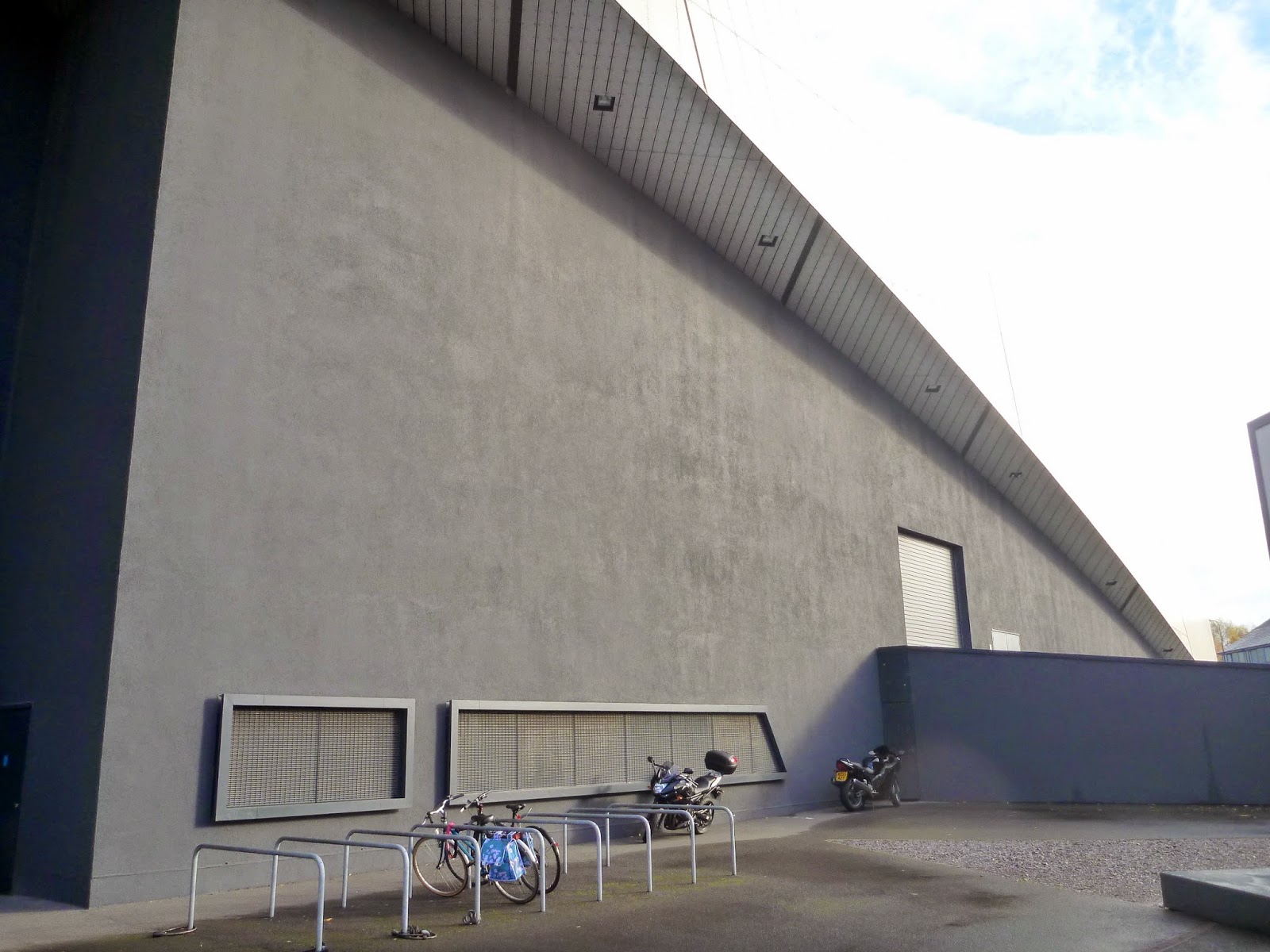'Museums are being built to regenerate themselves. Museums today represent a public discourse, a public activity, and a public attraction. They perform the considerable function of gathering a citizen's desires, emotions, and vision in a secular world. Museums are the places where people are mirrored in artifacts that testify to their existence'.
Daniel Libeskind
The Imperial War Museum, Manchester, designed by Daniel Libeskind.
Located on the banks of the Manchester Ship Canal in Salford Quays, this is an impressive building of immense power and integrity. The steel-framed aluminium clad building is composed of free-flowing forms and asymmetric geometry.
As always with Libeskind, there is a concept and symbolism behind the building. At the museum's opening Libeskind said that he sought to 'create a building which emotionally moved the soul of the visitor toward a sometimes unexpected realisation'. He envisaged a 'constellation composed of three interlocking shards' . Based on an imagined globe shattered by conflict, these shards represent the shattering effect of war on the history of the world. They are structurally interlocked to represent world conflict on land, water and air, each forming a functionally distinct part of the museum. The 55m high air shard provides the museum's entrance way and a viewing balcony above the Manchester Ship Canal. The earth shard houses the museum's exhibition spaces, while the water shard accommodates a café with views of the canal.
View from the Media City Bridge
Visitors enter through the Air Shard. The entrance is a typical Libeskind entrance: crooked, bunker-like.
I walked all around the building, taking photos so that it's revealed in all its facets
the side of the building with its slash-hole apertures, another Libeskind feature
Back to the front of the building but standing on the left hand side this time
View from the Lowry bridge
and again.
The most symbolic space in the building is the Air Shard, a huge wedge cutting through the building and towering into the sky. The inside is empty, save for its internal truss and viewing platform, 29 metres in the air. One can enter the Air Shard and we did just that.
Before taking the lift we came upon this installation Enter Ghost Exist Ghost, The Genie, by Bashir Makhoul, a Palestinian artist who considers the effect of conflict on communities.
The installation, made of cardboard boxes, suggests the temporary nature of settlements, dwellings or encampments that are a common product of war and conflict across the world. The humility and fragility of the cardboard boxes, which will warp and adapt over the period of display, reflects the life of refugees on the move. The structures also strongly resemble temporary Israeli training camps.
The tower construction is of criss-crossing steel beams, 4.5 degrees off the vertical
and encases the zinc-clad elevator and the cement tower containing the staircase. The lift climbs tenaciously up a skeletal perimeter wall angled, unnervingly, at 4.5 degrees off the vertical through a criss-crossing of steel beams
out of the lift
we arrived at a walkway
the meshed steel floor was rather scary as you could see all the way down the 95ft

and then we arrived at the viewing platform. The construction of the tower is such that it leaves the viewers exposed to the elements: wind, rain, and maybe even snow can beat and whistle through hundreds of unglazed floor-to-roof slits in the walls of the 180 ft leaning tower.

The views are spectacular
It is an unsettling experience though
not least because of the mesh floor
that, together with the slight feeling of vertigo, plus the wind whistling through the slits makes you feel very uncomfortable
Back through the passageway to the lift
and down to the ground floor - a scary but exhilarating experience.
Source:
http://www.arcspace.com/features/daniel-libeskind/imperial-war-museum/

























It is indeed a stunning experience. I remember it vividly, even though it is some years since we visited.
ReplyDeleteOlga, I've been to three museums that he's designed, and each one of them was inspired.
Delete